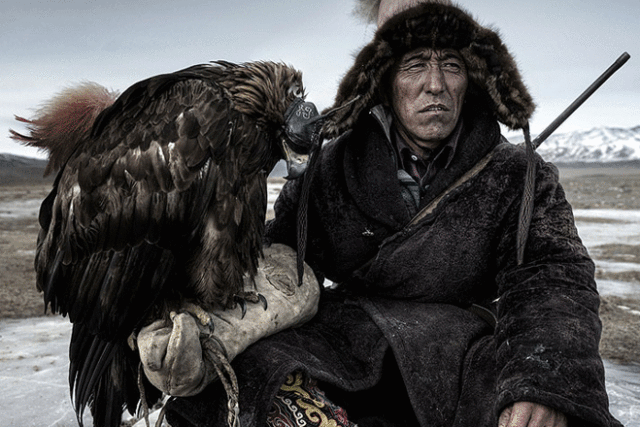By David Yamaguchi
A NATURAL QUESTION that emerges from our exploration of the Asian roots of the Japanese people is why don’t Native Americans look more like us? To elaborate, in this series we have seen that some Indian tribes strongly resemble Japanese. Examples are the Yupiks and Aleuts in Alaska (June 3, 2016 issue). However, most have a different, well, “Native American” look, perhaps best characterized by their long noses and Eurasian miens.
It is natural to wonder where that look comes from. Science tells us that the first Native Americans arrived by traversing a land bridge between the continents during the Ice Ages, when sea levels were lower. Yet that fact doesn’t fit with the appearances of present-day eastern Siberian natives, who by contrast strongly resemble Japanese (July 13).
Through wandering the web during the course of writing this series, I stumbled on the amazing answer. There are people in central Asia that also have “Native American” faces! They live in the Altai Mountains bordering western Mongolia in central Eurasia.
In addition to outwardly resembling Native Americans, genetic studies of Altai peoples support the link between the widely separated groups. The Altais resemble Native Americans on both the Y chromosome—which is paternally inherited—and on mitochondrial DNA—which is maternally inherited. So it was indeed the ancestors of the Altai people that made the crossing between the continents! Notably, the timing of the separation of the two populations can be dated to 20,000-25,000 years ago from tallying genetic discrepancies between Altais and Native Americans, and by applying natural rates of genetic mutation to the difference.
How do we make sense of all of this? While experts continue to debate the peopling of the Americas, the most explanation to me is that different groups made the trans-Pacific crossing at different times.
The first key crossing happened about 16,000 years ago. Until then, the descendants of the Altai people had only made it as far as Siberia. However, they had been unable to cross over to the Americas until ice melting created an ice-free corridor that plants, animals, and humans could traverse. The time window for crossing was thus constrained by three events: the emergence of the land bridge—caused by sea-level lowering—the later melting of sufficient ice to allow human travel, and sea level rise that put an end to further passage. The resulting interval for crossing was brief, in geologic time at least. It was over by 11,000 years ago.
The descendants of those intrepid travelers that made it across gave rise to most Native American groups. They were able to spread far and wide—to Tierra del Fuego at the southern tip of South America—as the landscape before them was entirely devoid of people.
My connecting of the dots is that some later crossings must also have occurred through a combination of ice travel (dogsleds), and animal-skin boats (umiaks). These journeys began at least 3000 years ago. The descendants of these later travelers gave rise to the Yupiks and Aleuts—the peoples that look most like us.
The spread of these later peoples was more limited, as most landscapes were already occupied—and defended— by those already present. Thus, the late arrivals could only claim terrain where their specialist skills (e.g., the hunting of sea mammals) allowed them to thrive on inhospitable landscapes where others could not.
Here we will have to wait for specialists to work out further details. In the meantime, we have other incomplete threads to wrap up, and new ones to pursue.
Eagle hunter, thevelvetrocket.com; couple, abroadintheyard.com.

The Altai Mountains in central Eurasia. Image: xfluro.com







